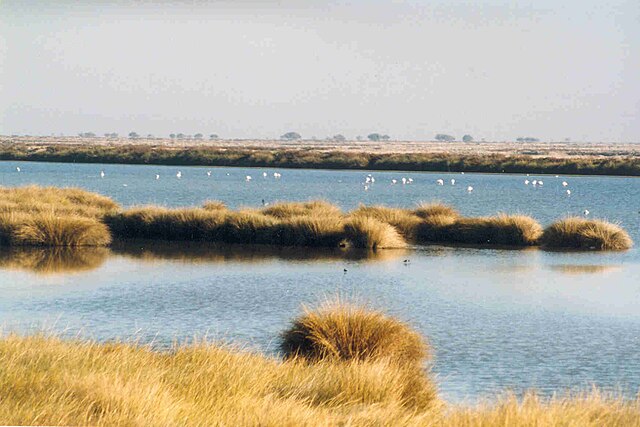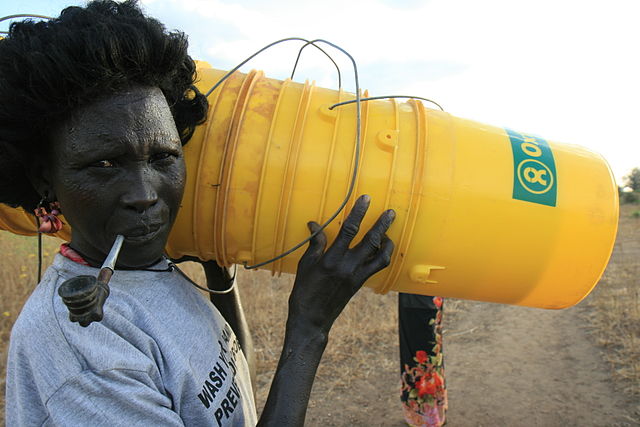Water storage is a broad term referring to storage of both potable water for consumption, and non potable water for use in agriculture. In both developing countries and some developed countries found in tropical climates, there is a need to store potable drinking water during the dry season. In agriculture water storage, water is stored for later use in natural water sources, such as groundwater aquifers, soil water, natural wetlands, and small artificial ponds, tanks and reservoirs behind major dams. Storing water invites a host of potential issues regardless of that water's intended purpose, including contamination through organic and inorganic means.
Great Nile Dam, at first cataract, Egypt, 1908, Copyright, 1908, by Stereo-Travel Co. Brooklyn Museum Archives
Wetlands in Donana National Park (Huelva, Spain)
The Hoover Dam
Nyalual Deng Joak carries a distribution of buckets back to her community. As well as constructing latrines and conducting health campaigns, Oxfam provides essential materials such as buckets, soap and mosquito nets that help people store water safely and protect family members from fatal illness.
A water tank is a container for storing water, for many applications, drinking water, irrigation, fire suppression, farming, both for plants and livestock, chemical manufacturing, food preparation as well as many other uses. Water tank parameters include the general design of the tank, and choice of construction materials, linings. Various materials are used for making a water tank: plastics, fiberglass, concrete, stone, steel. Earthen pots, such as matki used in South Asia, can also be used for water storage. Water tanks are an efficient way to help developing countries to store clean water.
Water tank used in municipal water treatment plant in Houston, Texas
Water tank from 1876 in Hanover, Germany
Derelict water tank near the Boorowa railway line, Galong,Australia
Stone water tank in a castle courtyard, Saxony, Germany








